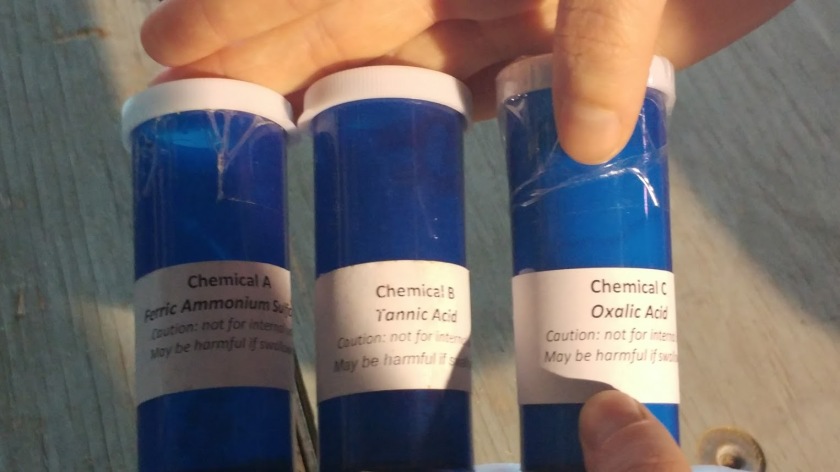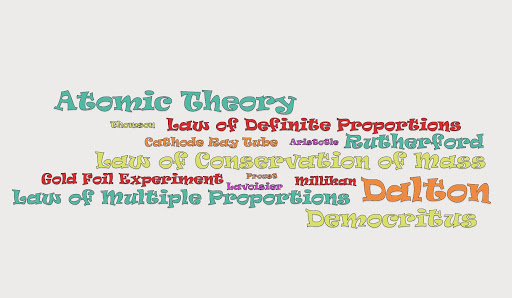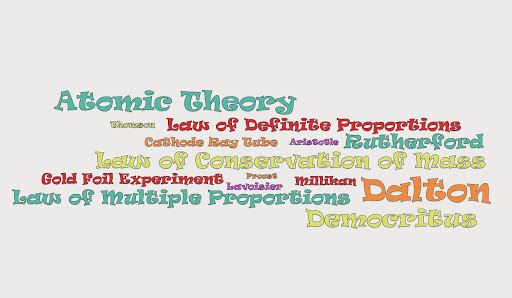I found this nifty list of common chemistry misconceptions that students have. As a new teacher, I’m not quite experienced enough to know exactly what students will end up having problems with. This list is definitely a handy guide of things to consider when teaching as I start out. The list also outlines the key difficulties that cause the misconceptions, as well as specific activities that can be used to address and challenge the misconceptions that students have.
List of Misconceptions
Below are some of the misconceptions I would never have considered, and some that I have thought about before:
Space between matter is “empty”
When learning about the different types of matter, you learn that some particles are closer together and some are further apart. According to the list, students have a hard time letting nothingness exist and want to fill in the spaces. Because of wave-particle duality, I know that the “nothingness” is an accurate particulate description and that the wave/energy understanding of particles helps explain why the nothingness is okay. The problem here, though, comes from the fact that students won’t understand this quite yet, and I don’t want to cause them to have an existential crisis like I did in college when I started over thinking this. More than anything, I just need them to understand that empty space is okay, and to not add anything else in where it doesn’t exist.
Particles can change form
The list states that “students ascribe macroscopic properties to particles,” and this misconception can cause a great deal of confusion continuing onward in chemistry. Where macroscopic materials like paper or wood can burn, tear, explode, etc., particles do not, and are rather the cause for the bigger reaction being seen. Rather than seeing the particles/atoms as the cause of reactions that do not change, students tend to see them as behaving the same way.
Condensation
While not the only misconception listed about condensation, I was very surprised to read that one of the most common explanations students give for condensation is that the water is coming through the glass. I would never have even considered this as being something students would believe, and I know that in the moment I would not have been able to address this immediately.
I can understand where this idea would come from though. When people sweat, they know that the liquid is leaving their body and coming to the surface, and that people often call condensation on a glass sweat. With these two ideas, it would make sense that students would believe that the water was coming out of the glass. I never would have considered it, but it does make sense.
Melting
Again, not the only misconception stated, but I was surprised that students think melting occurs because of changes in size of the particles/atoms. Students know that bigger things like roads and other objects expand when they heat, so some students will think that that melting occurs as the particles get bigger and break away from the solid. Some students also thought that the particles shrink in size, which is also incorrect.
This is very much related to the previously discussed misconception of students treating particles as having macroscopic properties, and it affects more than I realized. At this point in the list I’m beginning to realize how important it is to emphasize that particles themselves do not change like macroscopic objects, but are the reason behind these changes.
Chemical Reactions
The misconception that the list discusses is one that I have thought about as well, and have turned over in my head some. Students tend to mistake physical changes (i.e. phase changes) as chemical changes and vice-versa. In the question asked by the researchers behind the list, there were some physical and chemical changes that appeared to occur. In the answers given, students gave answers that showed confusion of the different changes, and these errors are ones that I have seen students struggle with as well. Very often it seems that students think a change of state indicates a chemical reaction has occurred, despite this being incorrect. Students also used terms like “melt” and “dissolve,” further indicating the confusion that persists in discriminating between the types of changes.
“What is a substance?” Understanding chemical terminology
This is another misconception I’ve dealt with in other areas of the course, specifically with density and weight. Even though teachers do their best to differentiate between vocabulary words so as to help the students know what terms are used when, it never seems to fail that students use some words interchangeably despite it being incorrect. This is something that should be fixed as soon as a teacher hears the words being mixed up, and can cause confusion further on.
There are some words though that can have multiple meanings as well. In the list, they use the example of the word “substance.” Personally, I’ve seen the word “create” cause students problems – matter is neither created nor destroyed, and then asking students what product is created. With “create,” I didn’t consider that students would get confused about it, and ended up getting students telling me that “no product was created, because matter is not created or destroyed.”
Precipitation
Even though the misconception students had here was use of incorrect terms, I’ve seen that students initially think the solution exhibited a color change. I’ve had explain that it did not turn colors, but that a new substance formed and that it was a solid. Many students I’ve interacted with also don’t realize right off that a precipitate had formed, and assumed the solution itself got murky (this was mentioned briefly on the list). I had to explain to these students that precipitate solids are very, very fine powders, and that the murky look means that a precipitate had indeed formed.
Dissolving
I didn’t realize that students often think that stuff just disappears when it dissolved. In the study done to create the list, more than half of the students in most age groups (unless I read incorrectly) believed that the sugar dissolved in water disappeared, as did its mass; the students thought the mass of the sugar water would be less once the sugar was dissolved.
I never would have considered this to be a misconception with dissolving. It is so important to stress the Law of Conservation of Mass/Matter, and I will definitely make a point to stress it in talking about dissolving.
The list also discusses students confusing the terms “melting” and “dissolving,” something I also would not have realized may be a problem.
Misconceptions about acids, bases, and neutralization
While not surprising, I would like to share the five main misconceptions that were outlined in the list:
- An acid is something which eats material away or which can burn you
- Testing for acids can only be done by trying to eat something away
- Neutralization is the breakdown of an acid or something changing from an acid
- The difference between a strong and a weak acid is that strong acids eat material away faster than a weak acid
- A base is something which makes up an acid
I will admit that before I learned about acids and bases, I shared some of this misconceptions myself, namely 1 and 4. And while I did know that acids and bases were different, I assumed that bases were safer and would not burn whereas acids would.
The first three misconceptions can easily be explained as coming from television shows where acid is used to destroy. The last two misconceptions may come from the words used, such as strong, weak, and base. Students, thinking that acid eats stuff, would think that a strong acid would be better at it than a weak acid. They also know that a base is like the starting material, rather than being a new term that describes a different type of substance.
A “dynamic” equilibrium
This is a biggie when it comes to reaction rates, if students cover this in basic chemistry. Up through college I assumed that once a reaction is finished, the product(s) just sit there. In actuality the molecules continue moving around, and bonds are constantly being made and broken. When a reaction “finishes,” it is at equilibrium. Chemical reactions are still occurring because of the energy of the molecules, but the equilibrium stays constant – the amounts of reactants and products in the system are the same at any one time when at equilibrium.
____________________________________________________________________________________________
I really, really liked this list and the information it provided. I did not include all of the material it provided, and I recommend a good read through for any science teachers looking for ways to approach misconceptions in their classroom. This list had a lot of really good information, and I’m actually tempted to print it out and keep a physical copy for myself!
*It should be noted that I got the list on this webpage.






